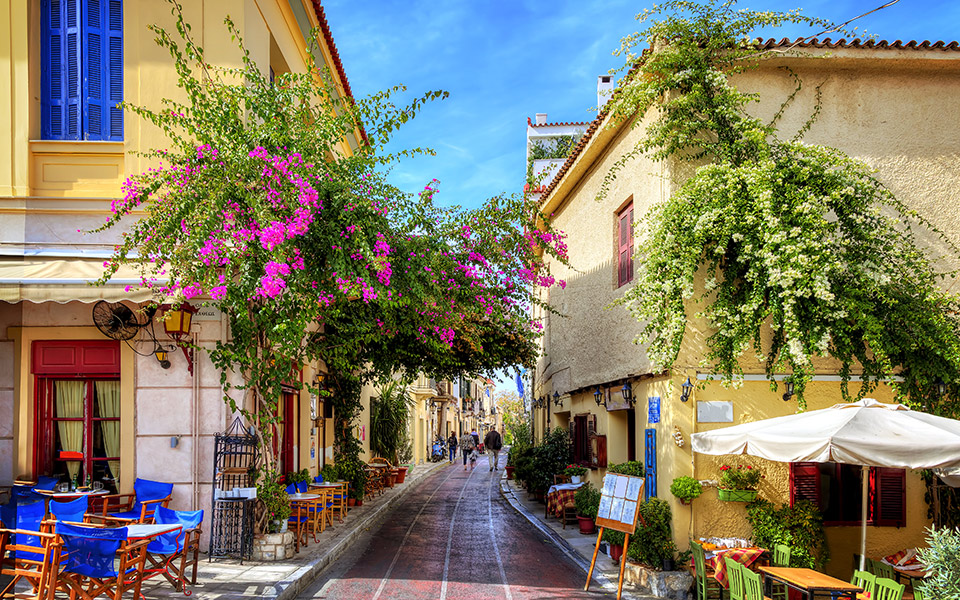Elliniki Etairia (ELLET), the Society for the Environment and Cultural Heritage, this year celebrates 45 years of social actions in the public sphere.
The organization was founded in 1972 as a reaction to the demolition of a Venetian-era church in the Cretan town of Iraklio, and in the years that followed it put up a series of tough battles as the voice of reason against controversial legislation and plans. At the same time, it also developed interesting initiatives and campaigns for the protection of the environment and cultural heritage.
The first battle ELLET fought shortly after it was established in 1972 was against plans to build a cement plant in Methana in the eastern Peloponnese. Its next campaign was against the creation of a shipbuilding zone in Pylos, the picturesque harbor town in the southwestern Peloponnese, a project that would have put the entire area on a completely different course had it come to fruition.
However, the campaign that made ELLET a household name in Greece was its contribution to preserving the historic character of Athens’s Plaka district.

© GettyImages/IdealImage
“It was an eight-year fight, but we were finally able to achieve the introduction of legislation on land use. A lot of factors came into play, visionary leaders of that time like [Environment Minister] Stefanos Manos and later [Athens Mayor] Antonis Tritsis, but also the intervention of the tourism industry, which argued that tourists did not like the degradation of Plaka,” says Costa Carras, who served as ELLET’s president for several years and is still a member of the board of directors.
ELLET had to keep staunchly defending the framework for the protection of Plaka in the years that followed, but the “worrying thing is that the problems are reappearing,” Carras adds.
The society has a resume that speaks volumes about its commitment. This includes campaigns to establish the protected marine park in the waters around northwestern Aegean island of Alonissos; to protect the southern Saronic Gulf and the Prespes lake district in northern Greece; to declare the entire former royal estate at Tatoi, north of Athens, as a listed monument; to protect a section of Marathon; to preserve an ancient tower on the island of Kea; to list traditional settlements like those on Hydra and other islands; as well as to preserve dozens more monuments, Byzantine churches and traditional sites.
It did not limit its interest to Greece either, as ELLET has supported efforts to save the bell tower, or campanile, of Saint Mark’s Basilica in Venice, the Church of St Panteleimon (Kizil Kilise / Red Church) in Cappadocia and the medieval paintings at Saint Catherine’s Monastery in Sinai.

© Sofia Papastrati
Another important battle fought by the society, and which lasted several years, was against a ridiculous plan to divert the Acheloos River in western Greece, initially fought with the Hellenic Ornithological Society and later with other agencies and organizations.
“In my opinion, the battles ELLET fought for the protection of the landscape at Delphi, for Marathon and for Plaka were very important. The diversion of the Acheloos, however, was different as it concerned a huge part of mainland Greece,” says outgoing society president Costas Stamatopoulos. “Elliniki Etairia was consistently on the front line for 20 years, achieving successive annulments of the plan by the Council of State [Greece’s highest administrative court].”
Elliniki Etairia was one of the first nongovernmental organizations to focus a campaign on the Aegean, for the protection of small islands and to stem the onslaught of tourism development. A case in point is its efforts against a special zoning law for tourism that was introduced in the late 2000s. ELLET mobilized scientists, people in the public eye and its own members to lobby at every level of the administration and government, and also ran a very effective awareness campaign. When all that failed, it took recourse to the Council of State, at a time when the judicial body was known to defend the basic principles of spatial planning and environmental protection. A few years later, Elliniki Etairia achieved the cancellation of the plan.
Today, the society runs award-winning programs and campaigns such as those for sustainable schools, protecting monuments that are under threat and creating walking trails with a cultural content, among others. It also coordinates the Network of Organizations and Citizens for the Historic Center, which brings together 14 bodies campaigning for the protection of that part of downtown Athens.












